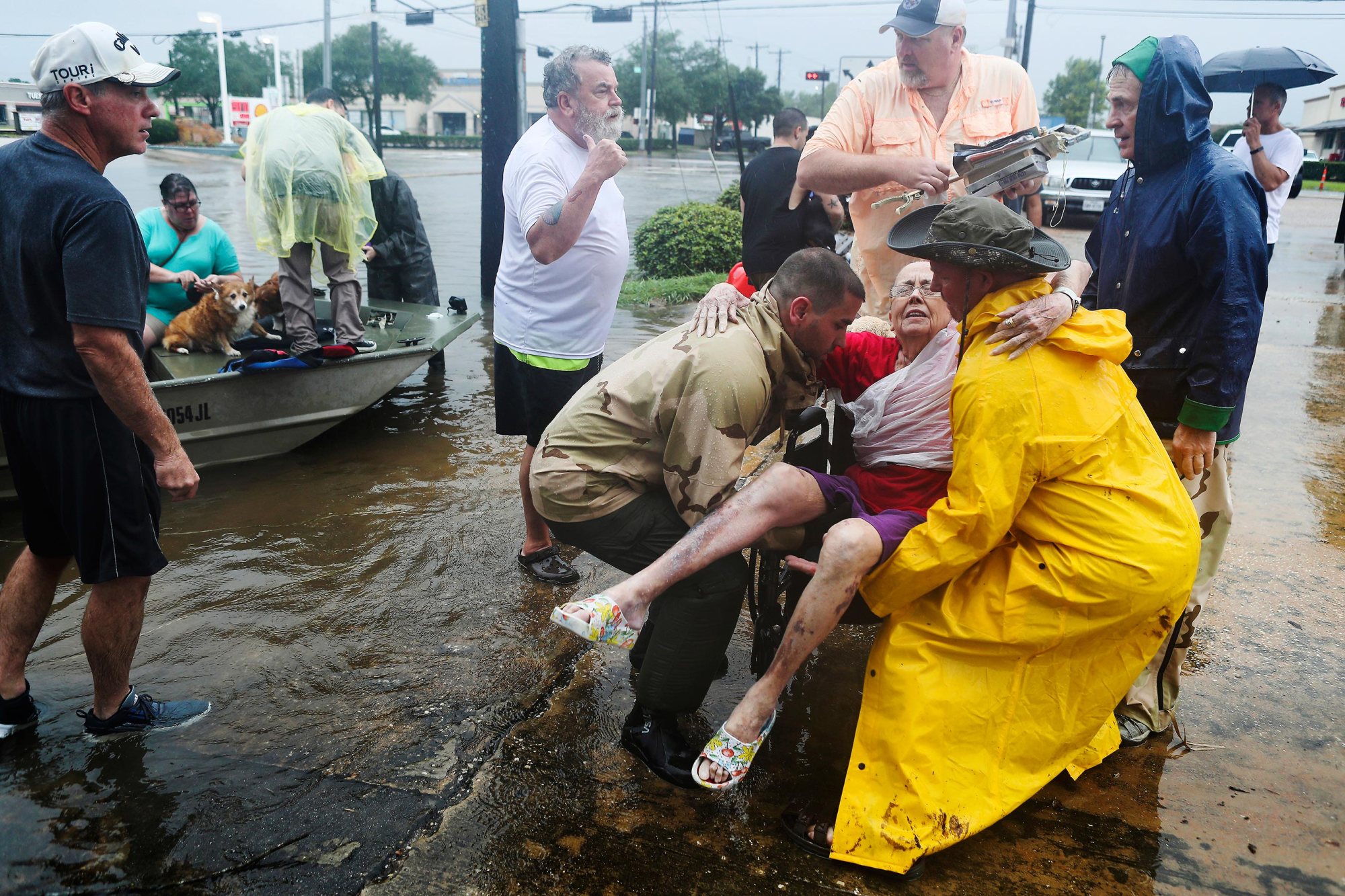When a big news story hits, the first place I go isn’t a television or an online newspaper—it’s Twitter. In fact, nearly 9 in 10 Twitter users say they use the platform for news, according to an American Press Institute study. While Twitter and other social media platforms bring us news, they also allow us to participate in the news-making process by commenting, reacting and sharing our own updates.
Never was this blurred line between news consumer and producer more murky than during Hurricane Harvey, a tropical storm that brought an estimated 27 trillion tons of water to Texas and Louisiana last week, causing extreme flooding and devastation. While the amount of damage caused will make the storm a record breaker (it’s on track to become the costliest storm in U.S. history), Harvey may also be remembered as the first large-scale natural disaster to be documented and dealt with on social media.
Time Magazine has already called Hurricane Harvey “The U.S.’s First Social Media Storm.” From posts asking for help to internet memes, we look at the ways social media impacted storm survivors and the American public, for better or worse.
When 911 Isn’t Enough
“We called 911 Monday and it rang and rang and rang,” Houston resident Annette Fuller told the Associated Press August 28. Though operators do their best to handle the influx of 911 calls that come in during a natural disaster, phone lines become clogged and help becomes scarce. When that happens, many endangered residents make frantic posts for help on social media.
Because social media networks often include an extensive collection of friends, family members and acquaintances, the calls for help are more likely to reach the right hands. Additionally, if multiple people are able to call 911, there is a greater chance of getting through and sending help to the person in need. I haven’t lived through a natural disaster, but I can easily see a post on Twitter being my first line of defense if I was in a dangerous situation. The friendly faces of my followers are a much more tangible form of help than a stranger’s voice at the other end of a call.
Law enforcement has warned about the dangers of sharing your location or home address on social media—it can make the home more vulnerable to looting and crime. While sharing rescue information publicly has its risks, the amount of successful rescues seem to far outweigh the consequences. Karen North, a professor of social media at the University of Southern California, told the Associated Press that “more than any other natural disaster, Harvey has made it clear that social media has revolutionized the search-and-rescue process.”
Viral Pictures: Fact or Fiction?
Natural disasters always end up with a few iconic images that last in the collective public’s brain and come to define the event. While this has been true throughout history, social media allows timely pictures to spread like wildfire, even when their credibility is questionable.
Take the picture of Barack Obama feeding victims of Hurricane Harvey, which was actually a picture from Thanksgiving 2015. It was circulated heavily on Twitter, with one post gaining 7,000 retweets, before being debunked by other users, CNN reported. An honest mistake can turn into a huge funnel of misinformation when images are shared without going through any official fact-checking channels.
/https%3A%2F%2Fblueprint-api-production.s3.amazonaws.com%2Fuploads%2Fcard%2Fimage%2F578064%2Fea1b9677-dcf9-4c5c-9a58-3ffb0d4ea03a.jpg)
Similar mistakes were happening with image manipulation: pictures claiming to show sharks in the water on a Texas freeway were clearly manufactured, but still gained traction and managed to cause a stir. While Hurricane Katrina fought its own battle with out-of-proportion rumors about crime and deaths, these rumors were never backed up by manipulated images that circulated quickly on a public platform.
However, viral pictures can also become a source of relief. A devastating picture of a flooded Texas nursing home that went viral raised awareness that allowed the residents to escape “safe, warm and dry.” They can also increase public responsiveness to the disaster and encourage donations. While viral pictures are often a source of misinformation, they can also be a tool for good.
Laugh it Off with a Meme
No matter how disastrous or traumatic an event, there’s one thing Americans won’t let go: their internet memes. The storm produced several, covering everything from “the avocado storm” to “pissed Hurricane Harvey cat.” One particular victim of memes? Steve Harvey, whose common name with the storm made him the focus of several “Hurricane Steve Harvey” memes. Harvey reacted with disdain at the memes, instead wishing the residents of Houston safety.
While it may seem macabre to make an internet joke out of a devastating storm, many of the memes seem to come from the residents of Houston themselves. One shared a picture of their washer-turned-beer-cooler, another of a local statue wearing a life vest. The funniest one I’ve come across so far? A video of a Houston man excitedly catching a fish in his flooded living room. Being able to laugh in the face of fear, in a very public way, with funny internet memes, creates a spot of a joy in a lot of dark.
Preserving a Sense of Community
Finally, sometimes social media fulfills its original, intended purpose and creates a far-reaching online community. Sites like Twitter and Facebook allow users to easily share donation websites and encourage other friends to donate to storm relief. When your friends are giving back, you’re more likely to take a minute and give back too.
The sites can even help preserve the local communities in Texas who are combatting the aftereffects of the storm. USA Today reported on local teacher Kathryn Butler Mills, who created the Facebook group “Hurricane Harvey Book Club” August 24 to help kids cope with the scary storm. The page features many adults reading and encouraging kids to use books as a healthy outlet for learning and distraction during the storm. Mills, who initially invited 70 people to like the page, has watched it grow to over 53,000 members. Online communities like these can preserve a sense of togetherness for neighborhoods that are physically displaced from one another’s support.
In our everyday lives, social media can feel like the black hole we get sucked into when avoiding our homework or exercise routine. We forget that beyond the gossip, the pictures, the event invites and information sharing, social media is a platform that can bring people together when physical barriers make it difficult. Hurricane Harvey has shown the power of social media, both negative and positive, to affect our real-world experiences and alter them through the power of online connection.

















